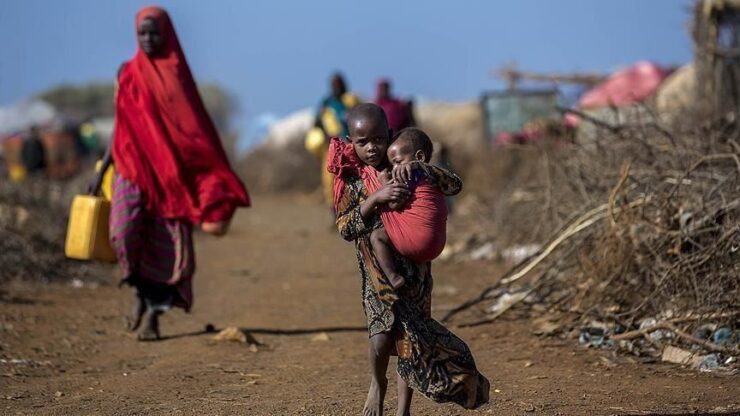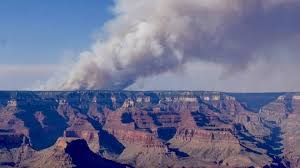Africa, often dubbed the “heart of the world,” faces some tough economic challenges. It’s like a diamond in the rough, with immense potential but currently overshadowed by economic hurdles. Imagine a race where Africa is unfortunately at the back, struggling with issues like political unrest, corruption, and civil conflicts. But the continent also has his developing side.
Out of the 27 countries that the World Bank labels as the world’s most economically challenged, a whopping 23 are in Africa. Plus, 21 of the world’s 55 countries with slightly better but still modest incomes are also here.
Now, let’s talk money. Ever wondered how we measure a country’s wealth? Two popular yardsticks are GDP per capita and GNI per capita. Think of GDP as the total earnings of a country, divided by its population. On the other hand, GNI is like GDP’s big sibling, adding any extra money the country makes internationally.
Both these figures are usually presented in either US dollars or a fictional currency called “international dollars,” which is like a universal translator for money, making it easier to compare different countries. These numbers give us a snapshot of a country’s financial health, and for many African nations, it’s a call to action for improvement.
The 10 Poorest Countries in Africa (by 2020 GDP per capita, PPP, ):
- Burundi ($771)
- Somalia ($875)
- Central African Republic ($980)
- Democratic Republic of the Congo ($1,131)
- Niger ($1,263)
- Mozambique ($1,297)
- Liberia ($1,428)
- Malawi ($1,568)
- Madagascar ($1,593)
- Chad ($1,603)
In 2020, Burundi wore the crown no country wants: the poorest nation globally, based on GDP and GNI per capita. Somalia, its African neighbor, was right behind in the unenviable second spot. This trend isn’t just a top-two phenomenon; Africa dominates the list of the world’s economically challenged.
But wait, there’s a twist! Afghanistan from Asia sneaks in at #6 with a GNI per capita of $500. And while we’re on the topic of transparency, countries like North Korea, Syria, and Yemen might have made the list, but they’re playing their financial cards close to their chest, not revealing their GDP/GNI data. Still, even with these potential additions, Africa would be the majority shareholder of this list.
Now, let’s zoom out for a broader perspective. Comparing Africa’s figures with the world’s economic giants paints a stark picture. Take Luxembourg, for instance. In 2020, it boasted a GDP per capita of $118,356, a staggering 150 times more than Burundi’s humble $771. And while Norway’s 2020 GNI per capita of $78,250 might seem less astronomical, it’s still a jaw-dropping 289 times Burundi’s $270.
But it’s not all gloom and doom. Some African stars are rising, showing impressive economic growth in recent years. With continued momentum, there’s hope that many Africans will witness brighter economic days ahead. Curious about where other African nations stand? Check out the table below for a detailed breakdown of their 2020 GNI per capita.
Here are the 10 poorest countries in Africa (PPP GNI):
- Burundi: $840 🇧🇮
- Central African Republic: $1,020 🇨🇫
- Dr Congo: $1,280 🇨🇩
- Somalia: $1,360 🇸🇴
- Mozambique: $1,410 🇲🇿
- Niger: $1,510 🇳🇪
- Liberia: $1,620 🇱🇷
- Chad: $1,640 🇹🇩
- Malawi: $1,700 🇲🇼
- Madagascar: $1,720 🇲🇬
– PPP GNI is gross national income converted to international dollars using purchasing power parity rates. An international dollar is a theoretical monetary unit that has the same purchasing power over GNI as a U.S. dollar in the United States.
1. Burundi 🇧🇮 ($840)
-
- Backdrop: Nestled in the African Great Lakes region, Burundi has a history marred by ethnic tensions between the Hutu and Tutsi communities.
- Economic Landscape: The majority of Burundians rely on subsistence farming. However, frequent droughts and floods pose challenges.
- Potential: There’s an opportunity to diversify the economy through tourism, given its scenic beauty and cultural heritage.
2. Central African Republic 🇨🇫 ($1,020)
-
-
- Backdrop: CAR has faced multiple coups since its independence, leading to prolonged instability.
- Economic Landscape: Despite being endowed with minerals, especially diamonds, CAR struggles with illegal mining and lack of infrastructure.
- Potential: Proper governance can tap into its mineral wealth and timber resources.
-
3. Dr Congo 🇨🇩 ($1,280)
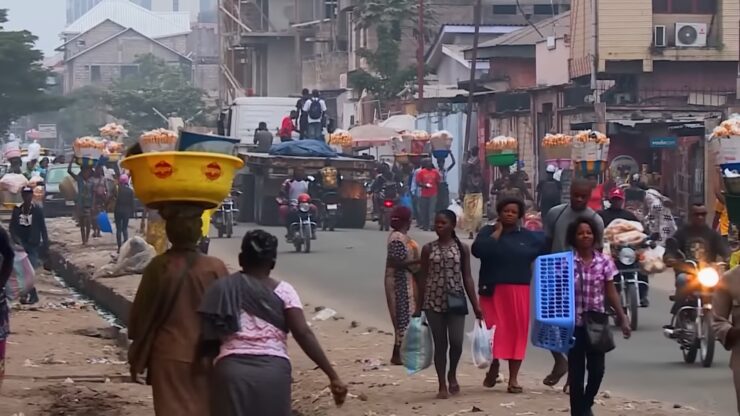
-
-
-
- Backdrop: DR Congo’s vast landscapes are rich in minerals, but it’s been a double-edged sword, leading to conflicts.
- Economic Landscape: While minerals are a boon, lack of infrastructure, corruption, and political instability deter investments.
- Potential: If stabilized, it can be one of Africa’s richest nations, leveraging its mineral wealth.
-
-
4. Somalia 🇸🇴 ($1,360)
-
-
- Backdrop: Somalia has faced decades of civil unrest, impacting its coastal trade routes and agriculture having its effect on their life expectancy.
- Economic Landscape: The lack of a central authority for years has led to issues like piracy, impacting its maritime trade.
- Potential: With its long coastline, there’s potential for maritime trade, fisheries, and tourism.
-
5. Mozambique 🇲🇿 ($1,410)
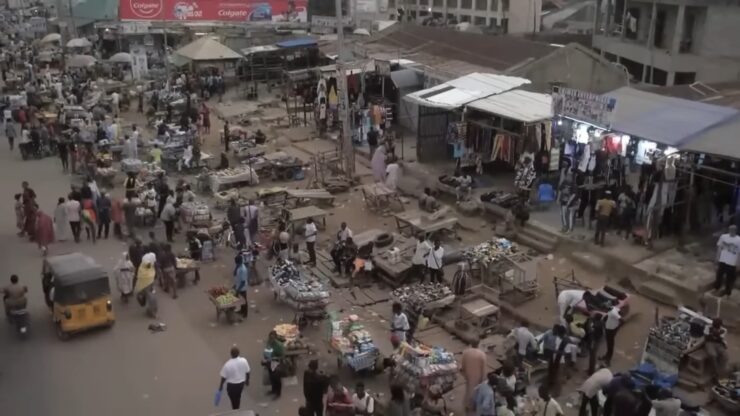
-
- Backdrop: Once a Portuguese colony, Mozambique faced a devastating civil war post-independence.
- Economic Landscape: Agriculture is dominant, but recent gas discoveries offer hope for diversification.
- Potential: Investments in energy infrastructure can make it a significant LNG exporter.
6. Niger 🇳🇪 ($1,510)
-
- Backdrop: Located in West Africa, Niger faces challenges like desertification and high fertility rates.
- Economic Landscape: Uranium export is significant, but falling prices have impacted revenues.
- Potential: Solar energy and agriculture, especially livestock farming, offer growth avenues.
7. Liberia 🇱🇷 ($1,620)
-
- Backdrop: Founded by freed American and Caribbean slaves, Liberia’s recent history is overshadowed by civil wars.
- Economic Landscape: The economy is reliant on iron ore, rubber, and timber exports.
- Potential: Reviving its agricultural sector, especially rubber, can boost its economy.
8. Chad 🇹🇩 ($1,640)
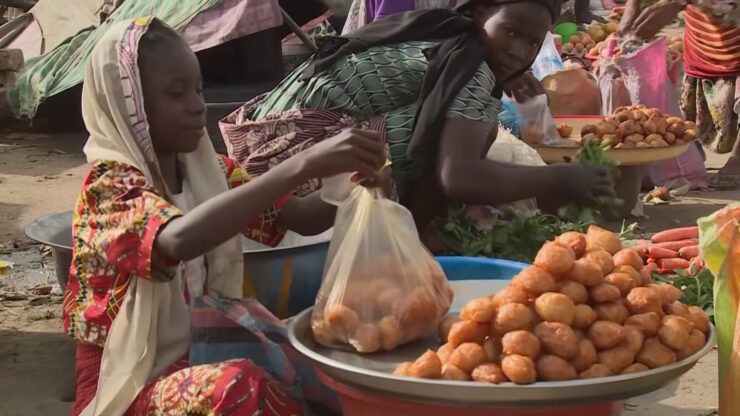
-
- Backdrop: Chad has faced multiple rebellions and conflicts with neighboring nations.
- Economic Landscape: Oil dominates its exports, but declining reserves pose challenges.
- Potential: Agriculture, especially livestock, and diversifying its energy sources can spur growth.
9. Malawi 🇲🇼 ($1,700)
-
- Backdrop: Known as the “Warm Heart of Africa“, Malawi is landlocked with a largely rural population.
- Economic Landscape: Tobacco dominates exports, but price volatility affects revenues.
- Potential: Tourism, especially around Lake Malawi, and diversifying crops can enhance economic stability.
10. Madagascar 🇲🇬 ($1,720)
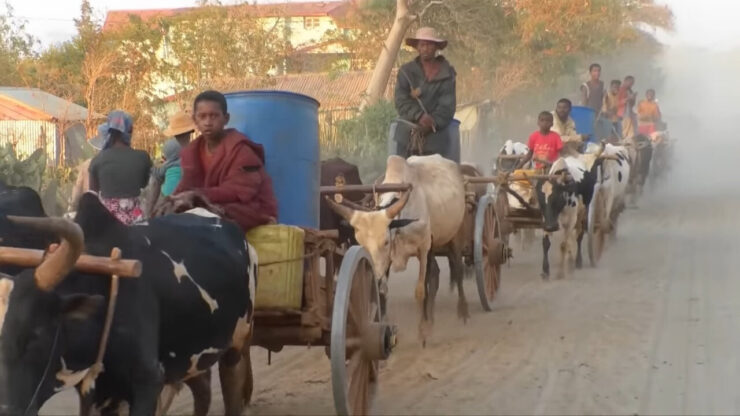
- Backdrop: An island nation with unique flora and fauna, Madagascar’s political instability has deterred investments.
- Economic Landscape: Agriculture, especially vanilla and cloves, dominates, but prices are volatile.
- Potential: Eco-tourism, leveraging its biodiversity, and expanding its textile sector can drive growth.
FAQ
Why is Africa often referred to as the “heart of the world”?
Africa is called the “heart of the world” due to its rich cultural heritage, diverse ecosystems, and its central role in human evolution and history.
How has climate change impacted the economies of these African countries?
Climate change has led to unpredictable weather patterns, causing droughts and floods, which severely impact agriculture-based economies like Burundi and Malawi.
Are there any initiatives or programs to help these countries improve their economic status?
Yes, international organizations like the World Bank, IMF, and various NGOs have initiatives aimed at infrastructure development, education, and healthcare improvements in these countries.
How does political instability affect the economy of a country?
Political instability can deter foreign investments, disrupt trade, lead to resource mismanagement, and often results in a lack of focus on long-term economic strategies.
What role does corruption play in the economic challenges faced by these countries?
Corruption can lead to resource misallocation, deter foreign investments, and reduce the effectiveness of aid and development programs.
How do global commodity prices impact the economies of these African nations?
Many of these countries rely heavily on the export of a single or few commodities. Fluctuations in global prices can thus have a disproportionate impact on their economies.
Are there any African countries that have successfully transitioned from being among the poorest to achieving significant economic growth?
Yes, countries like Rwanda and Ghana have shown significant economic growth and development in recent decades, thanks to reforms, investments, and strategic partnerships
Final Words
Africa, with its vibrant cultures, diverse landscapes, and rich history, remains a continent of contrasts. While it grapples with economic challenges, the spirit of resilience and hope shines through. The journey towards prosperity is a marathon, not a sprint. With the right interventions, partnerships, and governance, the “heart of the world” can indeed beat stronger, echoing prosperity and growth for its people. Let’s remain hopeful and supportive, for Africa’s potential is vast and waiting to be fully realized.

